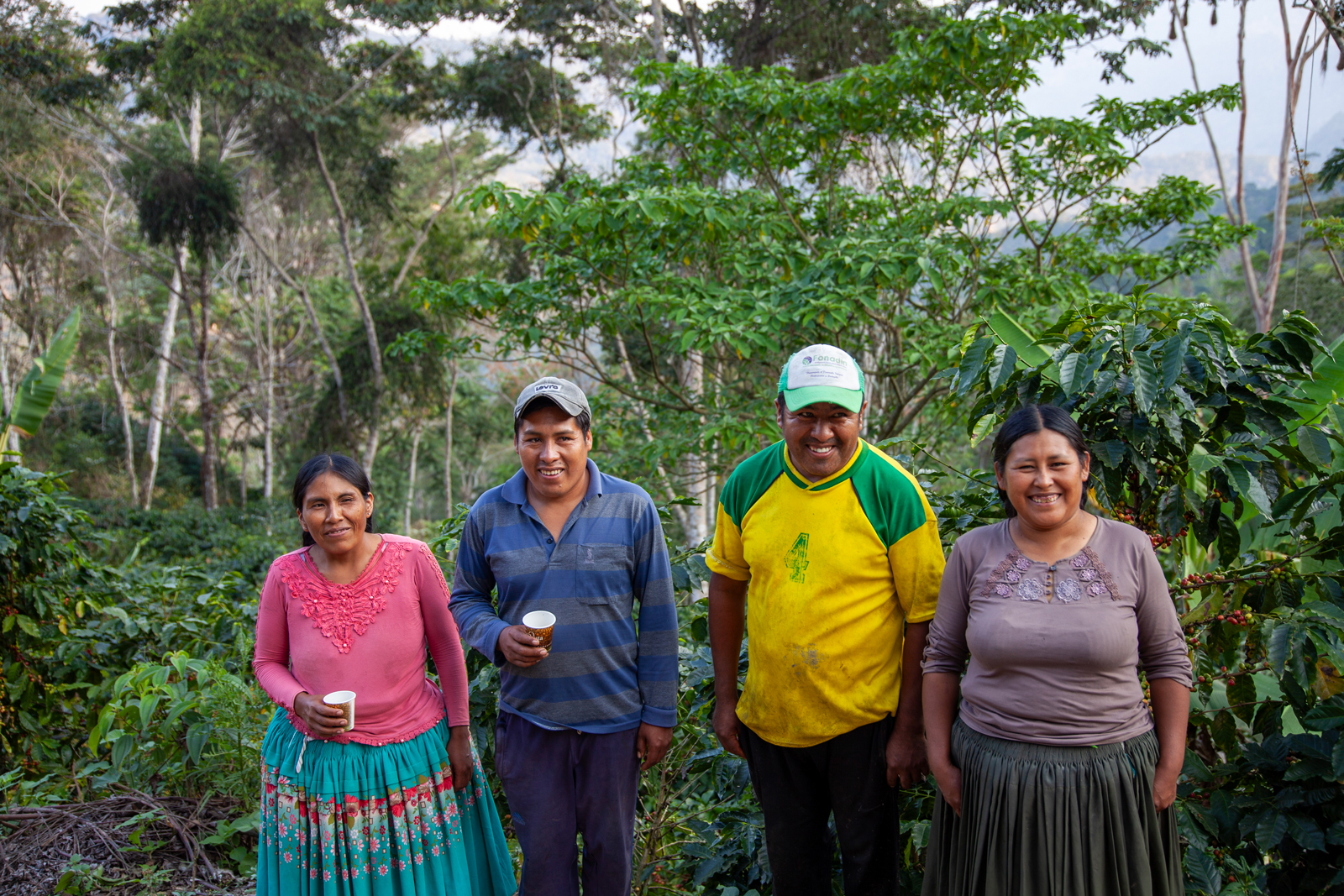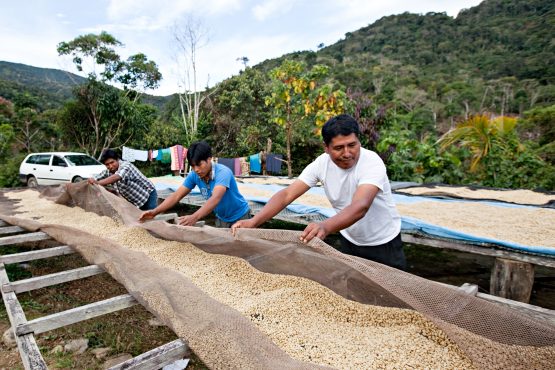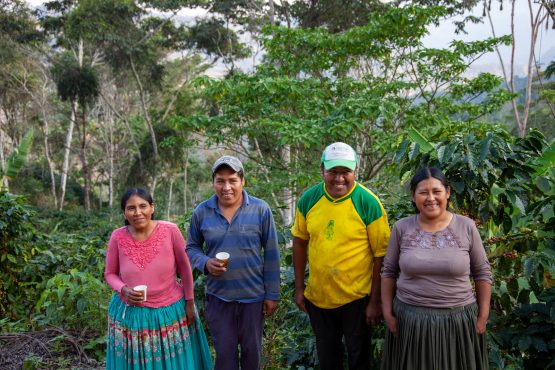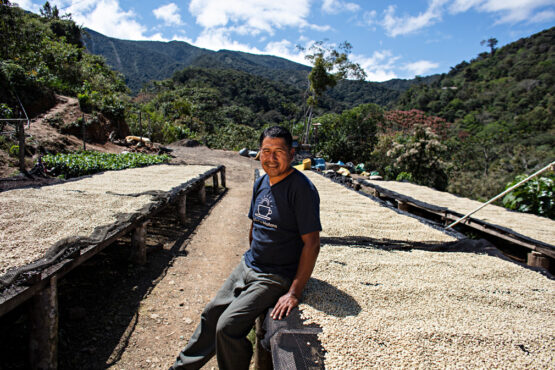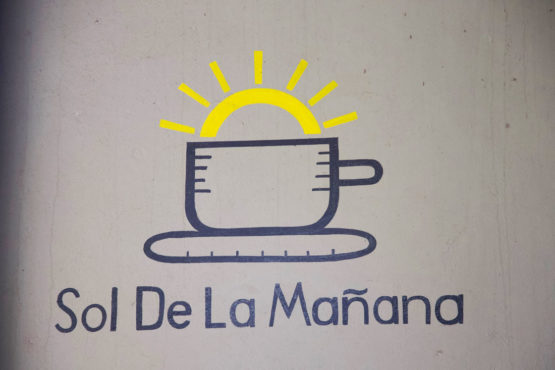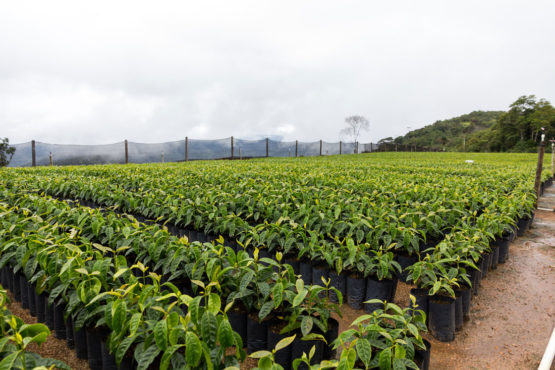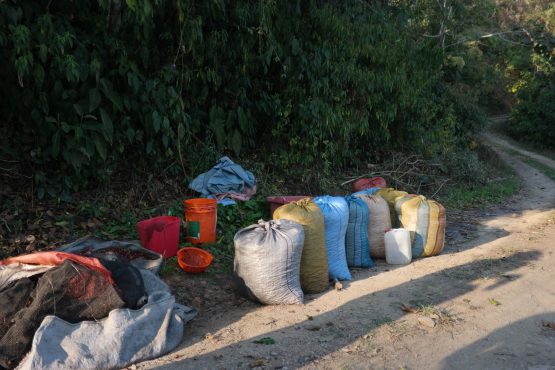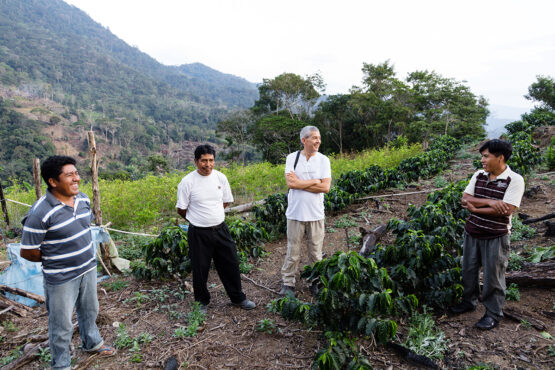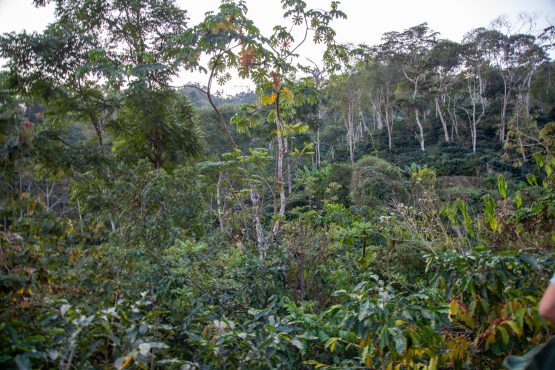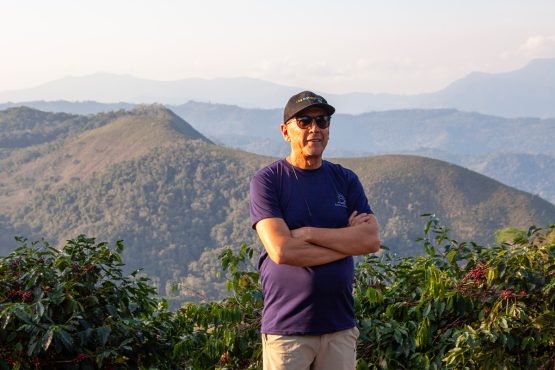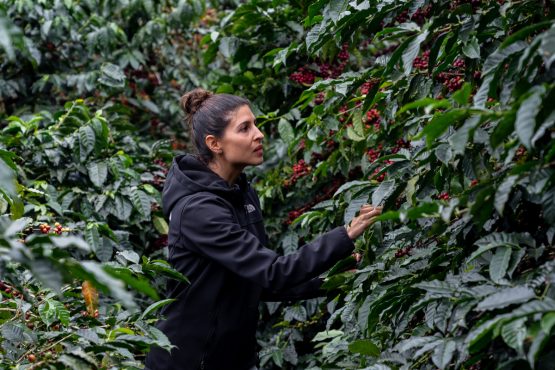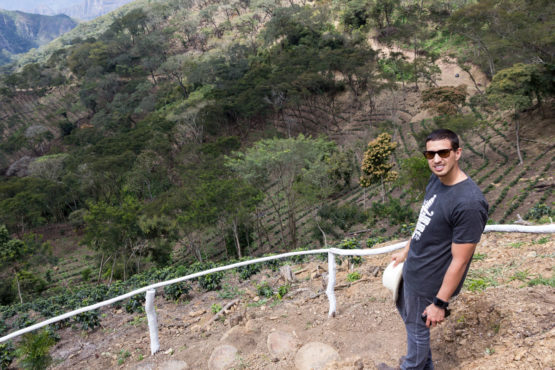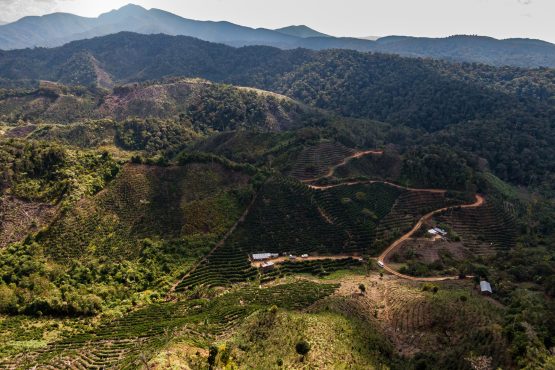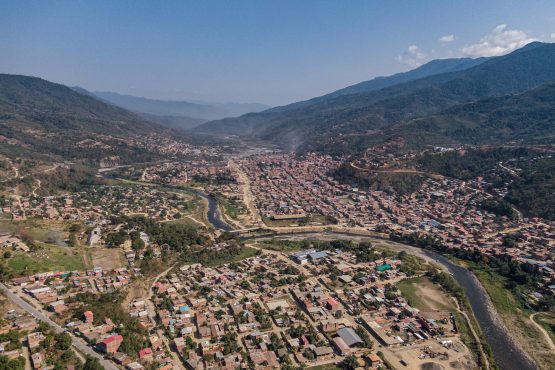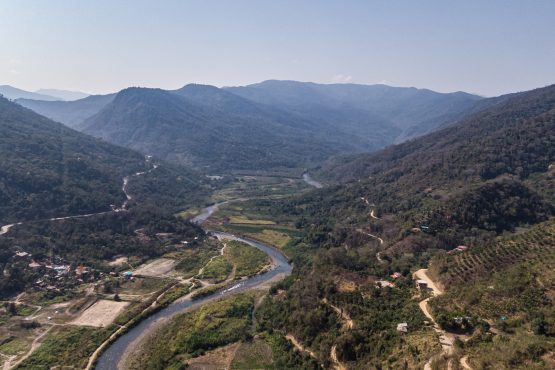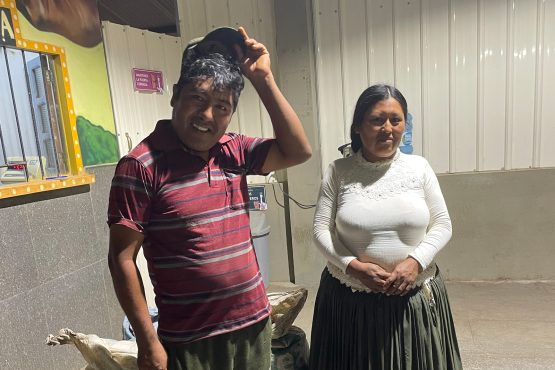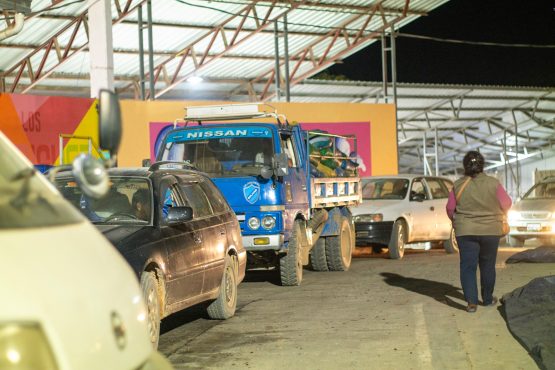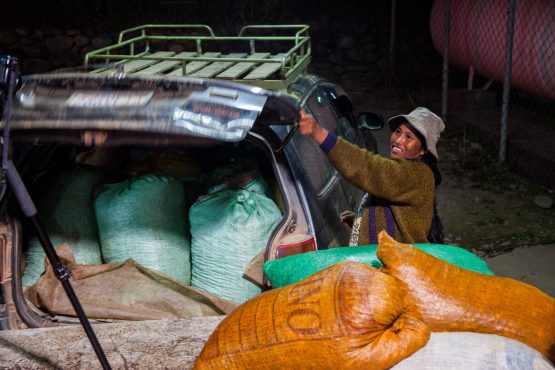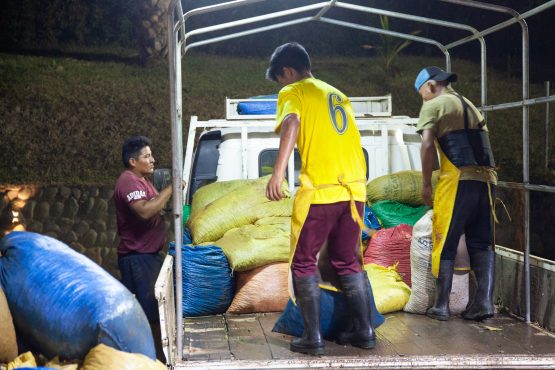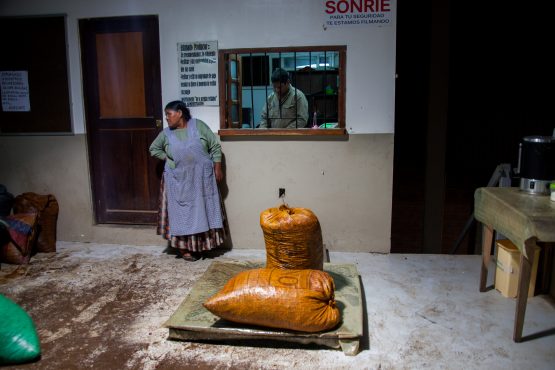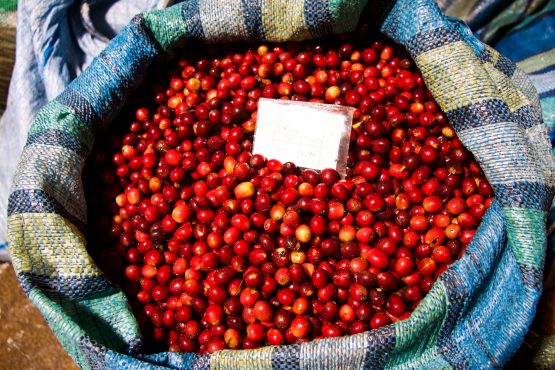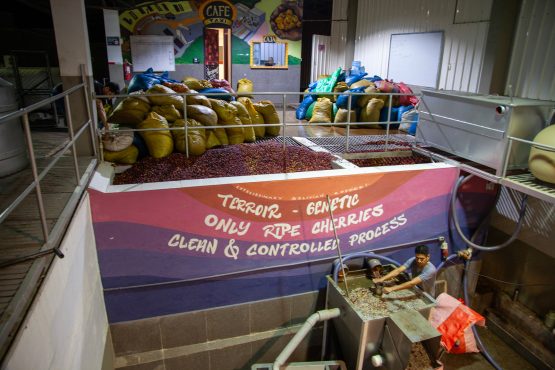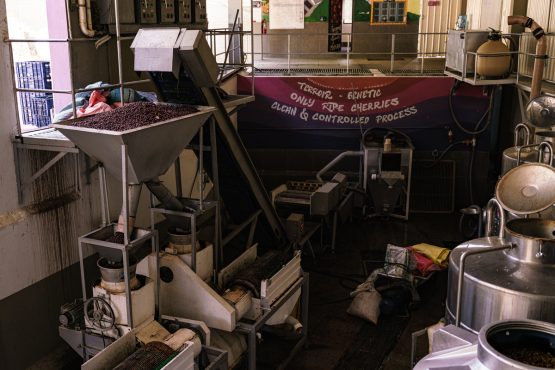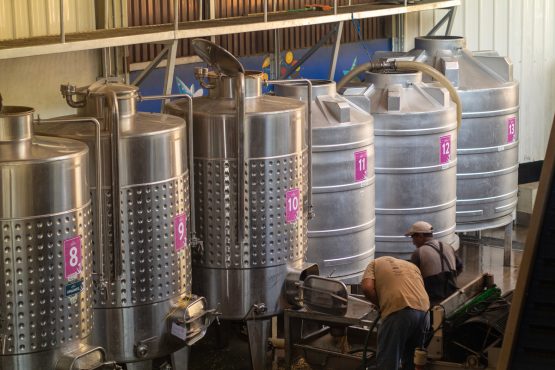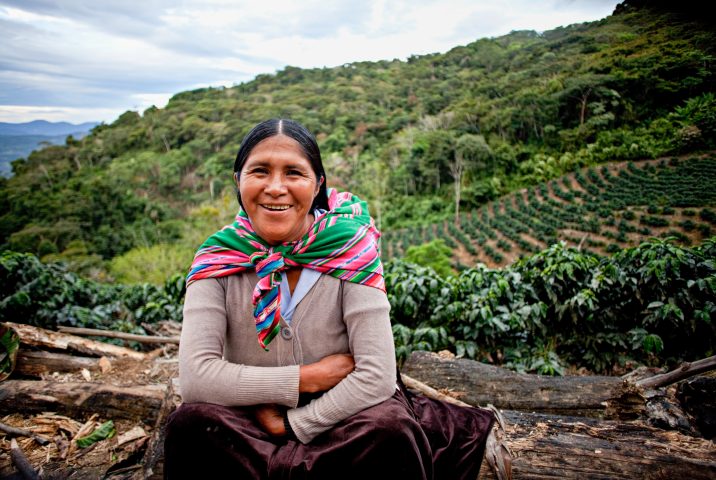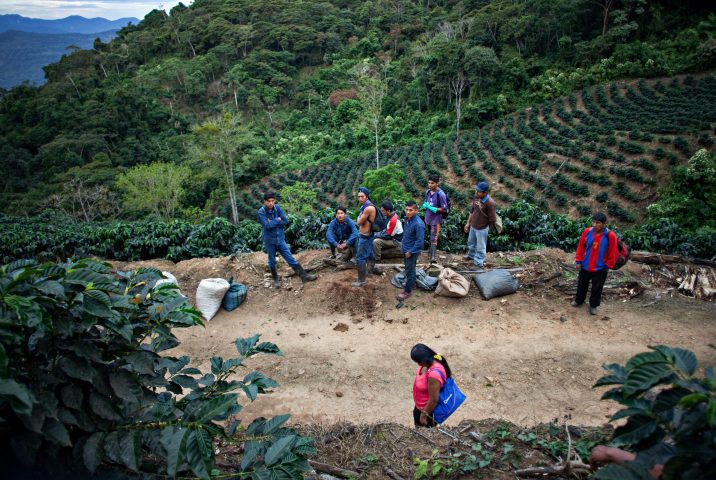Mamani Family
Bright and balanced, with a syrupy body. Cherry jam, red apple and raisin, with a clean finish.
This special microlot was produced by the influential Mamani Family in Uchumachi, a small and remote settlement 180 kilometres from Bolivian capital La Paz, in the heart of the Caranavi province. Caranavi is the epicentre for specialty coffee production in Bolivia, with incredibly highelevations, rich soil, and wide daily temperature ranges providing the perfect conditions to produce exceptional coffee.
Mamani is a very common name throughout Bolivia, but in this case, we refer to the family members Juan Carlos, Juana, Mauricio, Lorenza, Norberto, René and Nicolasa — who are known throughout the region for the coffee that they grow and the impact that they’ve had on coffee production within their community. This particular lot comes from René and Nicolasa Mamani’s farm Finca Renacer and Juana and Juan Carlos Mamani’s Finca Llana, which together make up some fourteen hectares.
The Mamani siblings and their spouses own neighbouring farms located in the Caranavi Province in Bolivia. When the family first started producing coffee, they would sell it to the local market as wet parchment – known locally as café en mote. But over the last decade (since the arrival of the Cup of Excellence), the entire family has focused on producing specialty grade coffee. Now, they selectively pick their coffee cherries and sell their top-grade coffees for substantially higher prices to our longtime partners the Rodríguez family at Agricafe as part of their Sol de la Mañana program. Since joining the program in 2015, the family follows a very structured series of courses focused on improving both quality and, critically, yield quantity at their farms. The curriculum hones in on one aspect of farming at a time and includes information on building and maintaining a coffee nursery, when to prune and use fertiliser, how to avoid and treat leaf rust, and how to selectively pick coffee.
The Mamanis work very closely together to support each other during the busy harvest time. Every time we visit, they mention how much they appreciate living close to each other, as it allows them to share important resources and labour from pickers during harvest. Together, they have established best farming practices, which they also share with their neighbours. The Mamani family has played a significant role within Uchumachi over the last decade, working closely with neighbouring farms to institute better agricultural practices to improve coffee quality and access a higher paying market.
Agricafe has also helped the Mamani family identify which parts of their farms to renovate and repair, with a focus on long term, sustainable, and ultimately profitable farming practices. As the family explained on a visit, ‘Our focus right now is on improving our yield. We know how produce exceptional coffee but we are now taking a more scientific approach to coffee farming.’ With the knowledge gleaned from the program the Mamanis have planted a thriving new nursery, aggressively renovated their farms, pruned the trees, and taken a more structured and planned approach to the way they farm. These efforts have paid off, as their yields have increased substantially over the years, and they no longer have the capacity to do all of the picking themselves, needing the help from eight to ten seasonal workers.
The Mamanis have also reduced how much of their own wet-milling and drying they do themselves, and Agricafe handles the processing of around 75% of their volumes at Buena Vista, their impeccable wet mill in Caranavi. During the harvest, the couples make the long two hour trip to the mill to deliver their cherry, sometimes making it back to the farm past midnight, only to start their next day a few hours later. While days during the season are long, when we asked the Mamanis why they were so motivated to continue working in coffee all these years later, Juan simply smiled and said, “because every harvest is a blessing to us.”
Alongside producing incredible coffee, the Mamanis are very entrepreneurial. In the last couple of years, as yields rose, Mauricio sold his main farm, and purchased another one nearby with the goal of building it up and improve it. Juana and Juan Carlos have also recently purchased a plot with Juana’s brother René and his wife Nicolasa. This new plot is up the hill from their farms Llana and Renacer, and it is being tended to following organic practices and under the shade of cedar and inga trees. While this approach is a departure from Sol de La Mañana practices, Juana and Juan Carlos reckon starting a plantation from scratch on fertile, untouched soil is the only way to make organic farming work in the region. So far, the new plot has required a lot of attention, but the soil is less needy and less fertiliser is required as a result of their practices.
Head here to learn more about the wonderful Sol de La Mañana program, and here to learn more about the incredible work the Rodríguez family and Agricafe are doing in Bolivia.
ABOUT CARANAVI
The inhabitants of Caranavi first started farming coffee in the 1950s, when a government-led agrarian reform resulted in small parcels of land (of around 10 hectares in size each) being redistributed back to thousands of largely Aymara families. The Aymara are one of Bolivia’s 36 indigenous nations, who originally lived on the highlands of the Altiplano (a vast plateau of the central Andes that stretches from southern Peru to Bolivia and into northern Chile and Argentina). Along with the Quechuas, who lived in the Bolivian lowlands, both groups immigrated to Caranavi to find a better life through agriculture.
The municipality is located in the Yungas ecoregion, one of South America’s most fertile and diverse locations. The region runs along both sides of the Andes Mountains, and is known for the world’s highest lake, called Titicaca. In the Quechua language, Yungas translates to “the warm lands,” in reference to the rainy, yet warm climate experienced in the region.
Many families in Caranavi, including the Mamanis, used to depend on the local market to sell their coffee, which meant low prices and little reliability. Now, they selectively pick their coffee cherries and sell their top-grade coffees for substantially higher prices to our partners the Rodríguez family of Agricafe, who process specialty lots at their wet mill in town.
HOW THIS COFFEE WAS PROCESSED
The Mamanis now own a few plots in Uchumachi, located at 1,500–1,670 metres above sea level. This elevation, coupled with the region’s latitude, helps ensure a slow maturation of the coffee cherry, which allows the concentrated sugars to develop more evenly, giving the cup more structure and complex flavours. The family deliver most of their cherry to Buena Vista for processing. This meticulously run washing station is owned by Agricafe, who painstakingly process each of the exceptional specialty lots they receive separately, allowing for full traceability back to the individual farmer or settlement.
Agricafe draw a lot of inspiration from the wine industry in their approach to coffee production, and are always innovating and trialling different processing techniques at Buena Vista. This coffee was processed with experimental techniques, part of the Rodriguez family’s long term strategy to achieve the greatest distinction and diversity in their special lots. Watch the video below to see how the Mamanis’ coffee was processed:
Evenings at the mill are always bustling as arrivals of fresh cherries begin in the late afternoon, after the day’s picking, and continue deep into the night. It is widely known around Caranavi that only perfectly ripe cherries will be accepted by this mill and all lots are inspected on arrival prior to processing. In an arrangement somewhat unique to this mill, many farmers use taxis to deliver coffee, and by 7 pm a long line of taxis forms along the road leading to the mill.
After being inspected and weighed, the coffee cherry was carefully sorted by weight using water, and floaters were removed. Following this, the coffee was placed a conveyor belt and disinfected, in a similar process used for wine grapes. It was then pulped and fermented in a sealed stainless steel tank for 72 hours. The team at Buena Vista made sure the lid remained shut for the full period of fermentation, to ensure no oxygen touched the cherries and that the punch-like, boozy aroma remained trapped inside.
The wet parchment was then washed with fresh, clean water and carefully machine-dried hours using a ‘guardiola,’ a horizontal, rotating drum that gets rid of moisture by creating a warm, consistent flow of air around the coffee.
Once the coffee was dry, it was transported to La Paz where it was rested before being milled at Agricafe’s dry mill, La Luna. At this state-of-the-art mill, the coffee was first hulled and sorted using machinery, and then by a team of workers who meticulously sorted the coffee again (this time by hand) under UV and natural light. The mill is one of the cleanest and most impressive we have seen – you can read more about it here.
